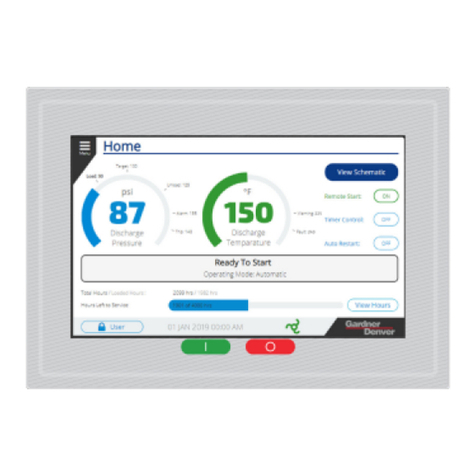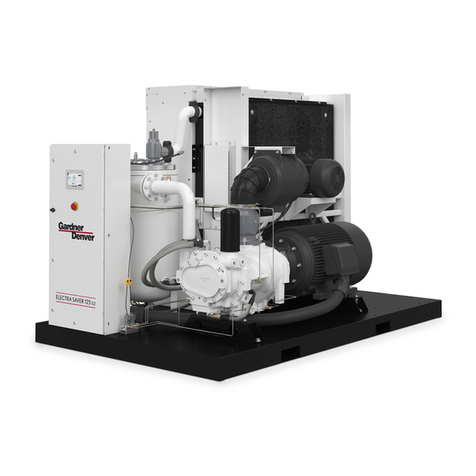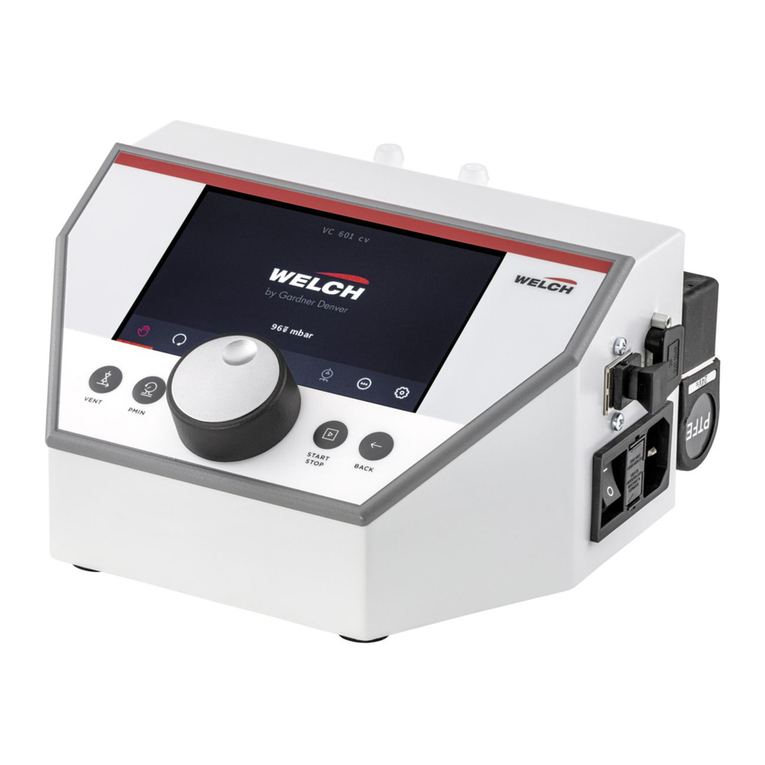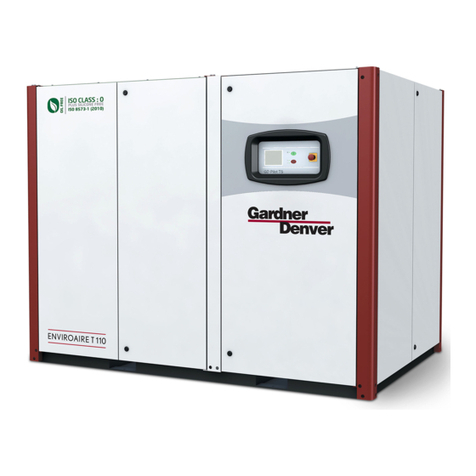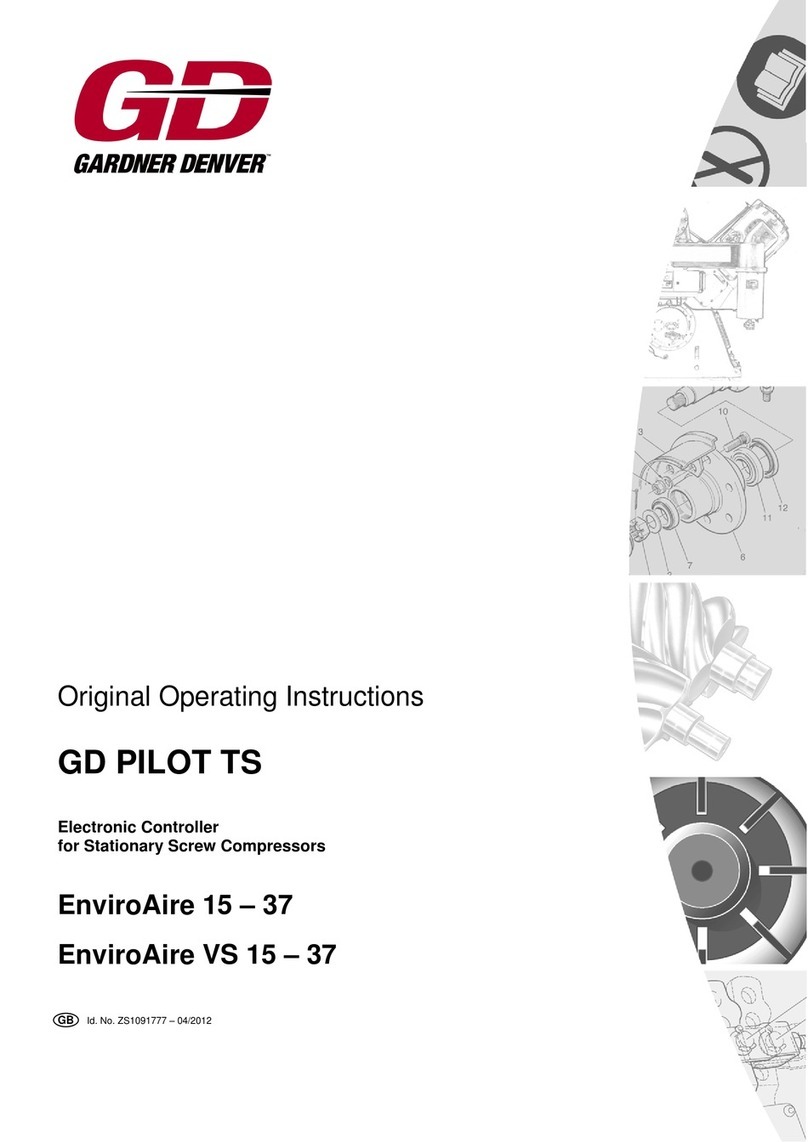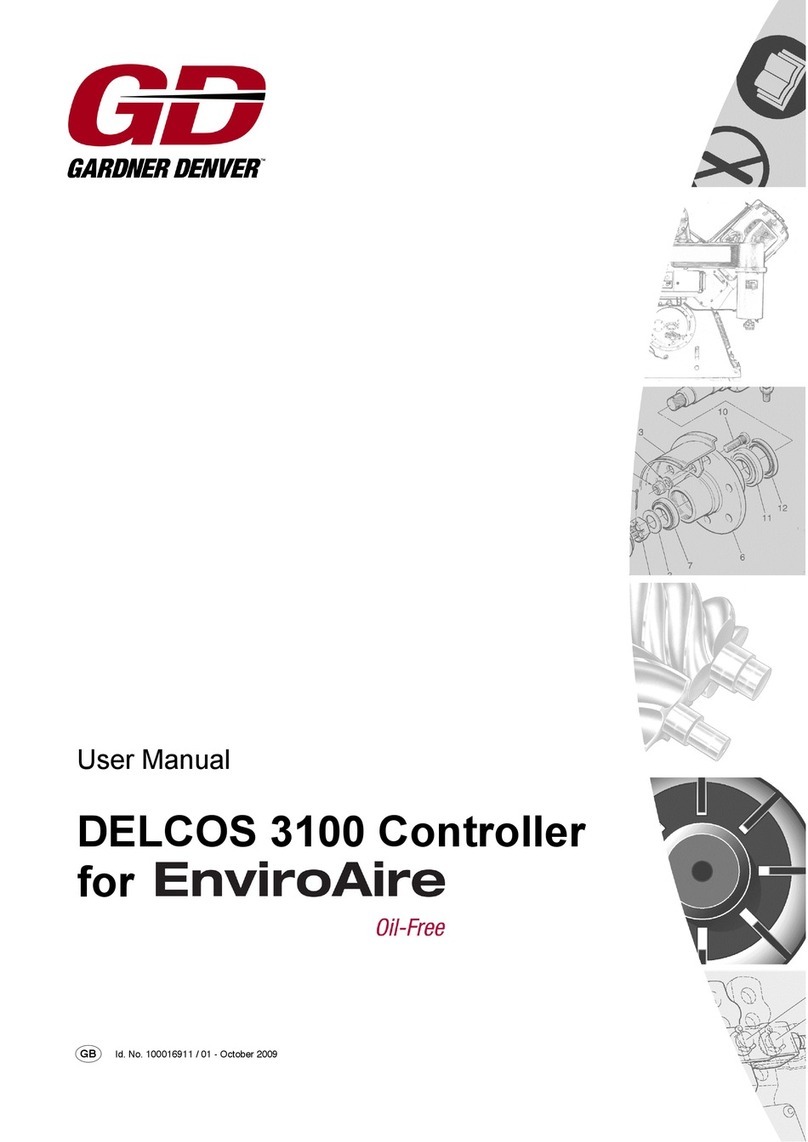
13-17-600 Page 4
Table of Contents
1General Information.................................................................................................................................... 5
1.1 AirSmart Controller Features................................................................................................................. 5
1.2 Control Panel Features.......................................................................................................................... 5
2Controller Operation................................................................................................................................... 6
2.1 Compressor Front Panel........................................................................................................................ 6
2.2 Control Panel Four-Line Display............................................................................................................ 7
2.3 Control Panel Indicator Functions.......................................................................................................... 8
2.4 Control Panel Button Functions............................................................................................................. 9
3Quick Start Guide..................................................................................................................................... 11
3.1 Setting the Target Pressure................................................................................................................. 11
3.2 Setting the Load and Unload Pressure................................................................................................ 12
4Air Compressor Control............................................................................................................................ 13
4.1 Variable Speed Compressors.............................................................................................................. 13
4.2 Variable Flow Compressors................................................................................................................. 13
4.3 Fixed Speed Compressors .................................................................................................................. 14
5AirSmart Controller Menus....................................................................................................................... 15
5.1 Operational Menus............................................................................................................................... 15
5.2 Adjustment Menus ............................................................................................................................... 38
6Error Management.................................................................................................................................... 65
6.1 VS Limiters........................................................................................................................................... 65
6.2 Advisory Faults..................................................................................................................................... 67
6.3 Shutdown Faults .................................................................................................................................. 70
6.4 Transducer Locations........................................................................................................................... 77
7Auxiliary Inputs and Outputs .................................................................................................................... 78
7.1 Operating Device Addresses ............................................................................................................... 78
7.2 Digital Input/Output Functions.............................................................................................................. 79
7.3 Analog Input/Output Functions ............................................................................................................ 81
7.4 Example “RUN” Digital Output Signal.................................................................................................. 82
8Technical Data.......................................................................................................................................... 85
8.1 All-In-One AirSmart Controller............................................................................................................. 85
8.2 Full-Sized AirSmart Controller............................................................................................................... 86
8.3 Agency Certifications ........................................................................................................................... 87
8.4 Environmental Ratings......................................................................................................................... 87
8.5 Electrical Ratings ................................................................................................................................. 87
Appendix A - Remote Mounted Main Motor Starters........................................................................................ 88
Appendix B - Remote Cooling Module Starters................................................................................................ 90

